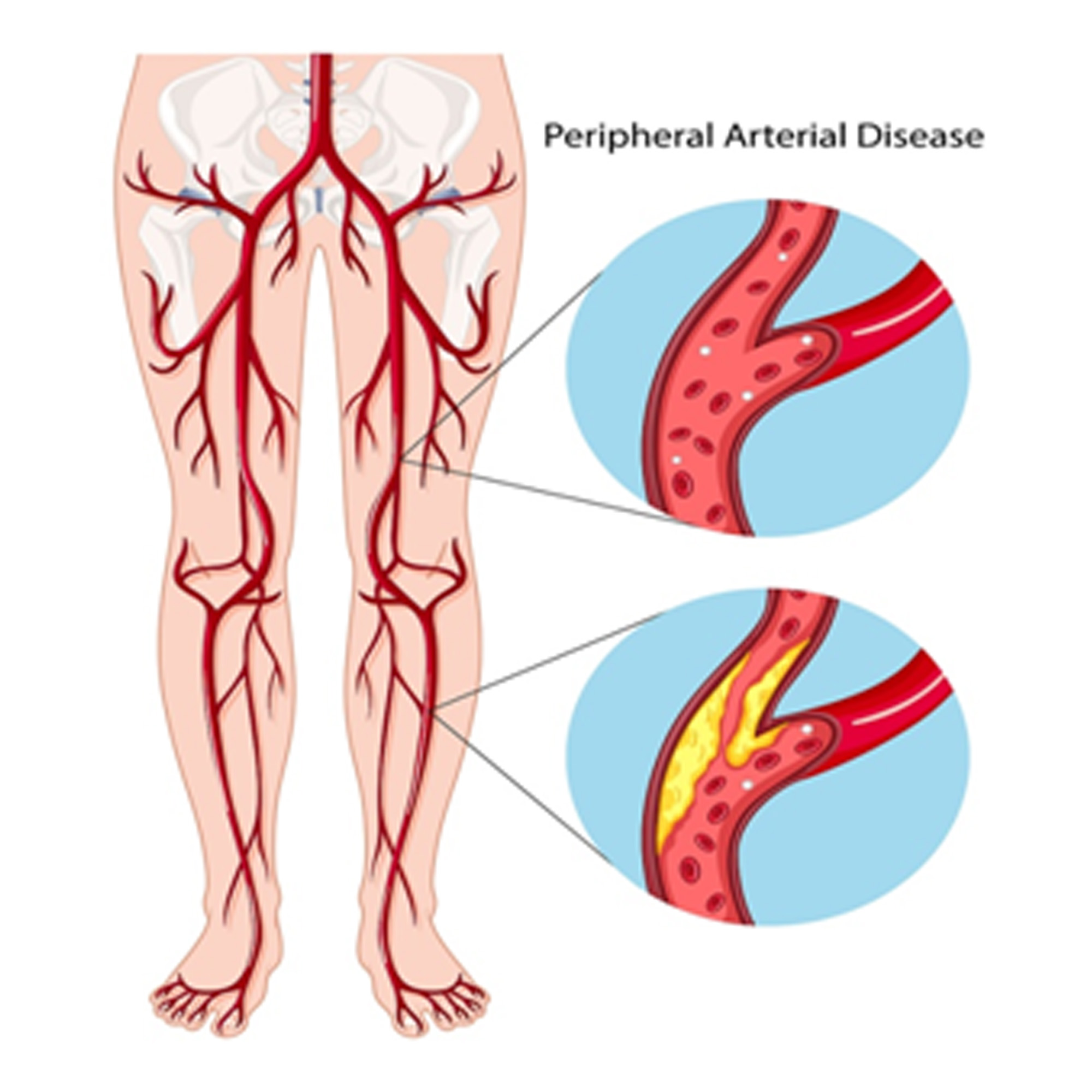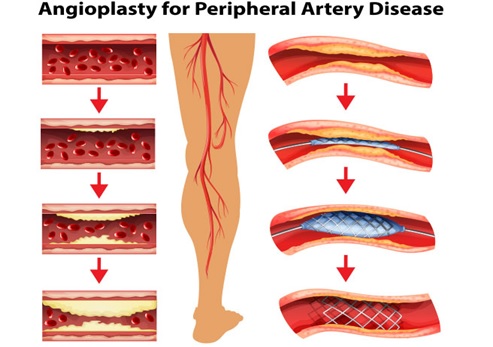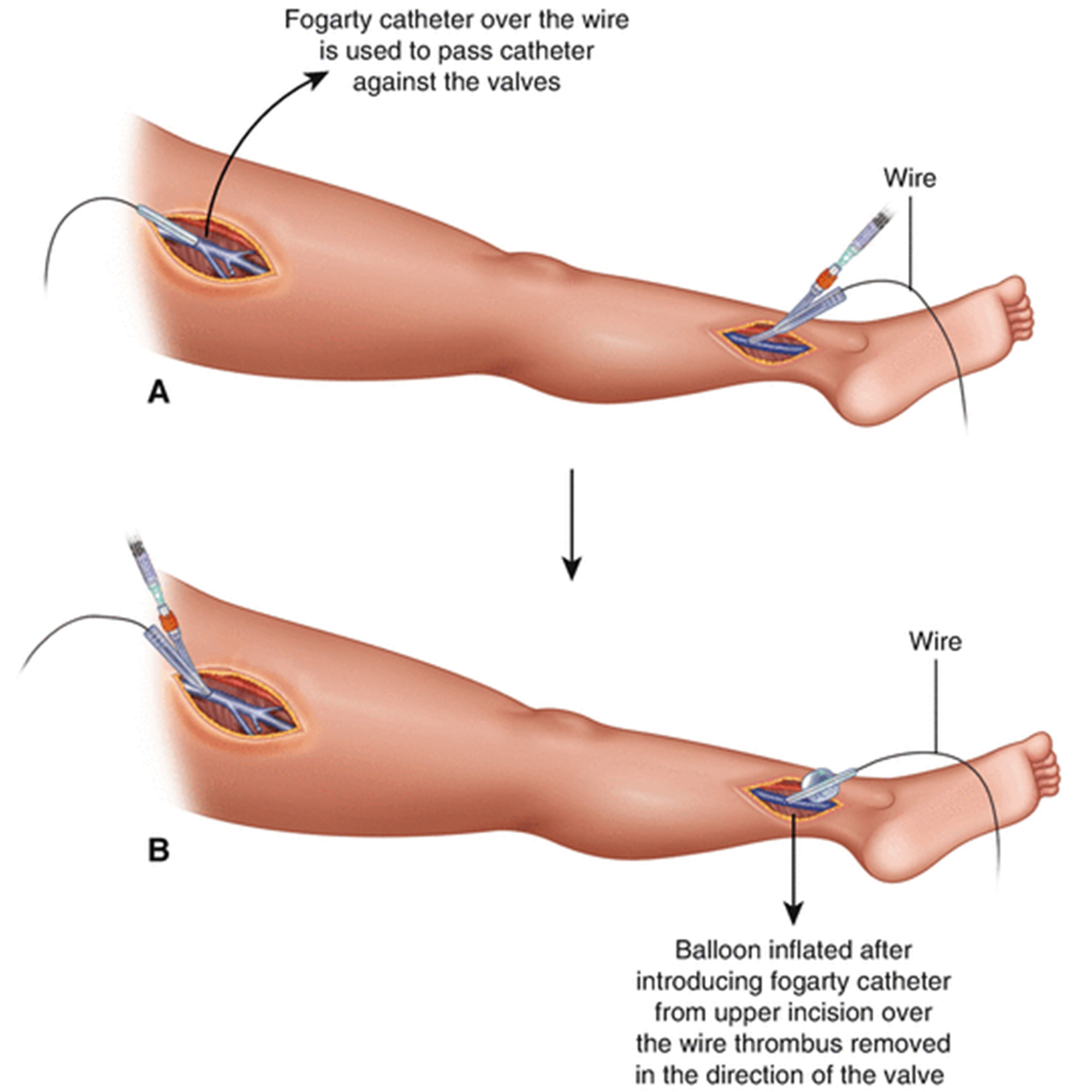
A circulatory condition in which blood vessels are narrowed and lessen blood flow to the limbs.
PAD and PVD refers to the build-up of atherosclerotic plaque (fatty deposits and calcium building up in walls of arteries).
The arteries in the legs are more commonly affected.
If you have the above mentioned symptoms, book your appointment now
1. Critical Limb Ischemia
Occurs when injuries and diseases progress due to tissue death sometimes requiring amputation of the affected limb.
2.Stroke and heart attack
The atherosclerotic development isn’t limited to your legs. It may obstruct the supply of blood to the heart and in the brain.

In the procedure, a catheter is threaded through a blood vessel to the affected artery. There a small balloon at the tip of the catheter is expanded to flatten the plaque into the artery wall and reopen the artery while stretching the artery open to increase blood flow.
A Stent may be placed (mesh tube) in the artery to help keep it open.

A Thrombectomy is an innovative surgical procedure to eliminate blood clots from arteries and veins. Blood clots can distract the normal flow of blood to an area of the body, causing life-warning conditions such as pulmonary embolism or an acute stroke.
During a thrombectomy surgery, the surgeon will insert a catheter into the patient’s blood vessel to eliminate the blockage and restore blood flow to the affected region.
Depending on the location of the clot and the severity of the blockage, quick treatment is often crucial. In instances of a stroke, for example, as many as two million brain cells can die for every minute the brain is denied blood.